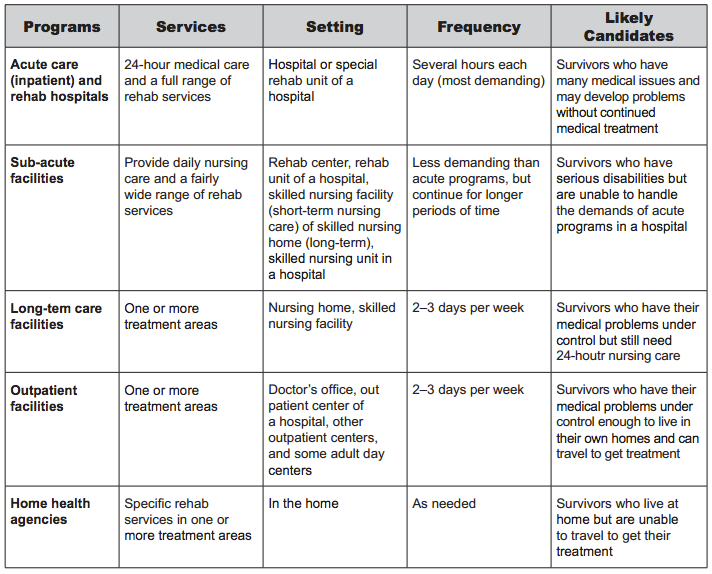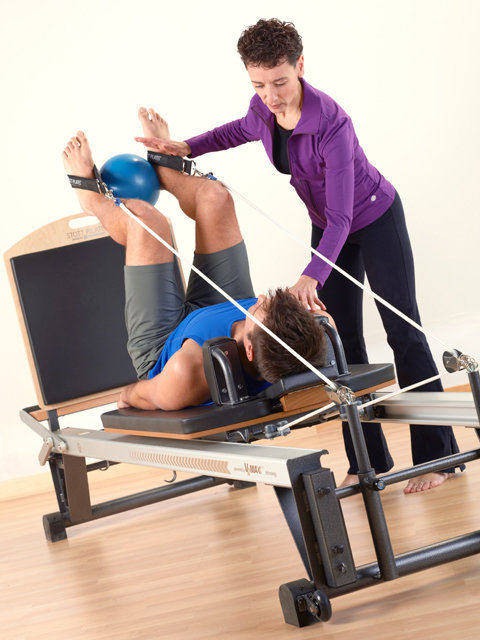Surviving Stroke - Part 2
Treatment Options and Prognosis for Recovery
Stroke is the third leading cause of death in the United States and the number one cause of long-term disability. That's the bad news.
The good news, according to the National Stroke Association (NSA), is more than seven million people in the United States today have survived a stroke.
Survivors face many challenges when it comes to recovery. Fortunately, treatments are available that can help minimize the effects and improve a person's chance of recovery.
In this post, we will cover the various treatment and recovery options available today.
Stroke Treatment
The kind of treatment doctors use depends on the type of stroke, either ischemic or hemorrhagic.
Ischemic Stroke Treatment
An ischemic stroke occurs as a result of an obstruction within a blood vessel supplying blood to the brain. It accounts for 87 percent of all stroke cases.
Two procedures are used to treat ischemic strokes:
Treatment Using tPA
According to the American Stroke Association (ASA), the only FDA-approved treatment for transient ischemic attack (TIA) is tissue plasminogen activator (tPA), which works by dissolving the clot and improving blood flow to the part of the brain being deprived of blood flow.
Endovascular Procedures
Another treatment option for some stroke patients is an endovascular procedure in which specially trained doctors attempt to remove the blood clot by sending a catheter to the site of the blocked blood vessel in the brain.
Sometimes these procedures involve tPA being administered directly into the blood clot (called intra-arterial treatment) to help dissolve the blockage. In other procedures, the doctor may attempt to remove the clot.
Hemorrhagic Stroke Treatment
A hemorrhagic stroke occurs when a weakened blood vessel ruptures and spills blood into brain tissue. The most common cause for the rupture is uncontrolled hypertension (high blood pressure).
Two treatment options are available: endovascular (discussed above) and surgical, in which doctors use surgical procedures to stop the bleeding.
Stroke Rehabilitation
The goal in rehabilitation is to help stroke survivors regain their normal functions in order to live as independently as possible.
In its book, HOPE: A Stroke Recovery Guide, the NSA outlines several rehabilitation options in use today.
Depending on the severity of the stroke, these may include:
- A rehabilitation unit in the hospital;
- A subacute care unit;
- A rehabilitation hospital;
- Home therapy;
- Home with outpatient therapy;
- A long-term care facility that provides therapy and skilled nursing care.


During all phases of rehabilitation, stroke patients typically work with a team of professionals from different specialties. These include:
Physical Therapy (PT) - helps restore physical function and motor skills such as walking and range of motion.
Occupational therapy (OT) - involves re-learning the skills needed for everyday living including eating, going to the bathroom, dressing and other routine activities.
Speech Therapy (ST)- therapeutic techniques designed to reduce and compensate for patients who have difficulty communicating, thinking or swallowing.
Recreational Therapy (RT) - reintroduces leisure and social activities such as swimming, going on outings, or taking music and art lessons. An important factor in recovery is getting patients reacclimated to the community and redeveloping social skills.
Stroke Recovery Prognosis
The medical community still has much to learn about how the brain compensates for damage caused by stroke. Some brain cells may only be damaged, not killed, and over time could resume normal function. The brain may also reorganize how it functions so that one part "takes over” for the damaged area.
Generally speaking, recovery guidelines show:
· 10 percent of stroke survivors recover almost completely
· 25 percent recover with minor impairments
· 40 percent experience moderate to severe impairments requiring special care
· 10 percent require care in a nursing home or other long-term care facility
· 15 percent die shortly after the stroke
Health care practitioners continue their research to find better ways to treat stroke and return victims to the life they knew before the attacked occurred. Still, the best treatment for stroke is prevention.
Due to its severity, stroke is not something to take lightly. If either you or a family member is at risk for stroke, talk to your doctor. Of course, when or if the need should arise, our skilled team of medical professionals is here to help.
